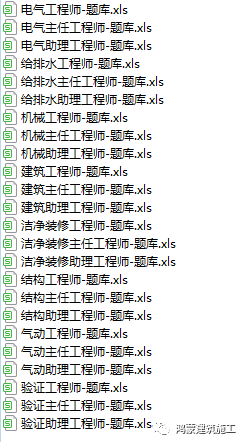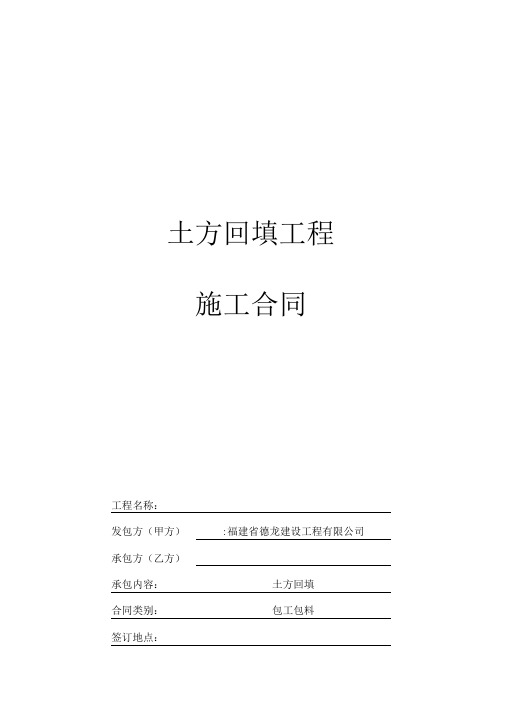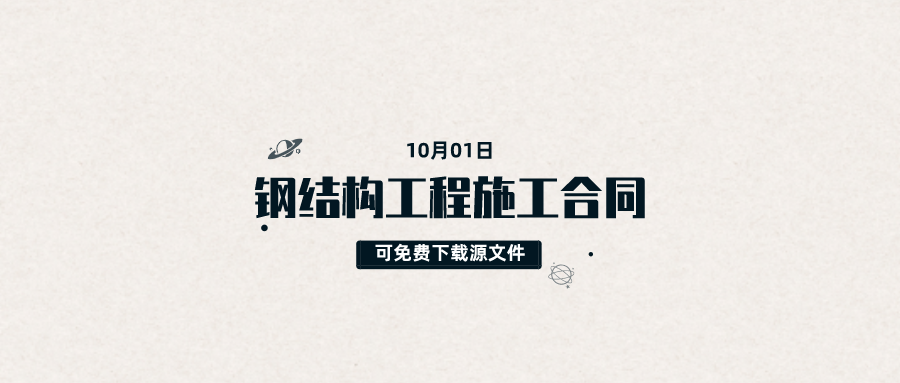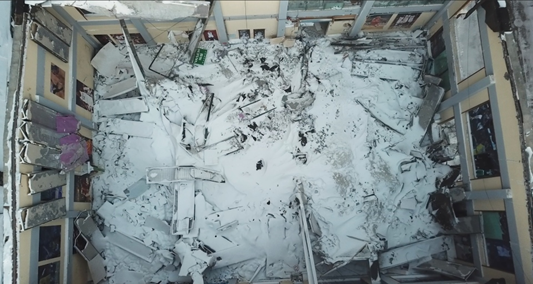摘要:钢结构工程门式钢架轻型房屋钢结构技术规范(CECS102:2002)。3建设方提供的钢结构设计施工图结构型式:单层屋面轻型钢结构厂房为确保本工程的工期和质量,根据工程现场情况及我司的技术及装备力量,特作如下施工部署:前一阶段钢结构制作,然后进行结构吊装,主框架吊装完成以后,穿插地进行屋架梁校正和次结构安装。钢构件进场后应按照施工图的要求和钢结构工程施工及验收规范的规定对成品进行检查验收。...
xxxxxxxxx 2021年配套乡镇集体经济钢结构项目
钢结构工程
施
工作
团体
织
设置
数数
合肥XXXX有限公司
2021 年 5 月
目录
第 1 章是根据……………………………………………………………………第 2 页编写的
第二章 项目概况………………………………………………………………第2页
第三章 施工组织……………………………………………………………………第3页
第四章 建设部署………………………………………………………………第3页
第五章 施工方案……………………………………………………………………第11页
第六章施工方法…………………………………………………………第12页
第七章 施工进度计划………………………………………… 第23页
第 8 章 安装现场用工计划………………………………………… 第 24 页
第九章 现场录入主要设备平面图…………………………………………第24页
第10章 施工质量保证计划……………………………………………… 第25页
第十一章 施工安全保障措施………………………………………… 第26页
第十二章 文明施工管理办法……………………………………………… 第32页
第1章是在准备的基础上
1、国家现行规范和质量评价标准;
1)钢结构工程施工质量预检验规范(GB50205-2001);
2)门式钢框架重型房屋钢结构技术规范(CECS102:2002)。
2、现行国家安全技术规范和建设工程安全技术标准;
3 施工方提供的钢结构设计及施工图纸
4、公司颁布的内部文件、工艺标准和施工方法。
第二章 项目概况
1、项目名称:XXXX 2021年配套乡镇级集体经济钢结构项目
2、建设单位:XXXX有限公司
3、建设地点:合肥市XXXX
4、建筑面积:2402平方米
5、结构类型:双层外墙轻型工字钢结构厂房
6、施工工期:50天
7. 项目目标:
7.1 质量目标:工程合格。
7.2 安全目标:避免死亡和伤害,轻伤发生频率控制在1.5‰以下。 严格遵守国家安全文明施工规定。 施工现场实行禁酒、无垃圾管理,保持作业水平和清洁,维护工地和市容。 环境卫生按照国家标准进行管理。
7.3进度目标:严格遵守协议,确保总安装工期控制在50天内。
第三章 施工组织机构
根据该项目的实际情况,我公司将增派具有相当施工经验和责任心的项目总监、施工负责人和技术负责人到现场进行管理。 施工组织机械照明如下:
第四章 施工部署
(一)施工部署及工艺流程
为保证本工程的工期和质量,根据工程现场条件和我公司的技术和武器实力,特制定如下施工布局:先预制钢结构,后进行结构施工。举起。 主机架升起后,进行地面穿插。 进行钢梁对准和下部结构安装。 随即进行了压制工字钢外墙和压制工字钢外墙的安装。
具体项目整体施工工艺流程如右图所示:
(2)施工方法:
1、测量放样
施工现场应设置2个现场平整点,作为从基础施工到主体施工、从结构吊装到地面施工全过程的标高控制点。
现场所有轴控桩和平整点必须保护好,设置时应考虑布置在施工过程中不易损坏的地方。
2、钢结构制造
钢结构由我们的钢结构工厂制造并预组装,然后运输到施工现场进行安装。 采用全手工生产线制造,并采用专用设备进行除锈、防腐处理。
2.1. 钢结构制造工艺:
2.2. 施工方法及技术要求
2.2.1. 放样
放样、展开、制作样杆、样板时,必须仔细核对图纸上的各项规格。 样杆和样板上的定位标记应根据钎焊收缩量和刨、铣等加工余量放置。 订购材料前,应先确认材料,并注明各零件的规格、尺寸和数量。同时予以验证。 主副弧上弦总长按图纸结构分段制作。 每段翼板和腹板接缝应错开200mm(断面宽度较长时)。 切割前应预先对钢材的弯曲或变形进行矫正,矫正时尽量采用机械方法(液压矫直机)。
2.2.2. 切割
切割前应先清除钢材表面切割范围内的污垢、锈迹等。 原则上,手工气焊用于切割钢材。 圆弧上弦主梁需要数控切割,以保证圆弧外观正确一致。 9mm以下的钢材也可采用剪切,但应除去剪切面的硬化表面层。 工字钢可以通过手工气焊和锯切来切割。
2.2.3. 孔加工
原则上,通过钻孔来打孔。 打标后,可以在摇臂铣床或数控铣床上完成。 孔应为圆锥形,并垂直于其所在钢材的表面。 倾斜度不应小于1/20。 孔的边缘应平整,无破损或凸出的迹象。 钻孔后应去除周围的毛刺。 打标钻孔时,应在螺孔的中心和圆周上标出预冲点,以防止钻孔时铰刀打滑,并方便检查(手动铣床钻孔和用手动铣床钻孔时不需此要求)钻孔模板)。
加盟方式
螺丝尺寸
(毫米)
通过样品规格(mm)
渗透率(%)
堵距(mm)
堵塞率(%)
摩擦接合
D+1.0
100
D+3.0
>80
支持组合
深度+0.7
100
深度+0.8
100
2.2.4. 集会
装配前,应仔细核对零件的几何规格和零部件之间的连接关系。 仔细审查装配零件的数量、材质、尺寸、数量、直线度、切割精度等是否与图纸和工艺要求一致。 如果工字钢有弯曲、扭曲、翼倾斜等变形,必须矫正后才能使用。 装配标记工具(钢尺、直尺)必须事先经计量部门检验,检验样品在使用前也应与实物核对,确保无误。
2.2.5 电焊作业
2.2.5.1 电焊作业常见事项
A、焊工必须持有有效的电工资格证书。
B、电焊工必须具有一年以上实际电焊工作经验,并在过去六个月内继续从事同一类别的工作。
C. 装配和钎焊过程中使用的点焊步骤和顺序应尽量减少变形和收缩。
D. 所有点焊顺序应能够平衡点焊执行期间的加热量。
E. 应先施工较大的点焊,然后再施工较小的点焊,以减少粘结。
F、钎焊前应对所用焊丝进行试验,看其是否符合设计要求。
2.2.5.2 焊丝使用前的检查
A、所使用的焊丝应先报批,核定后方可使用。
B. 钎焊前必须进行工艺评估。
C、焊丝油墨原材料应均匀,不得有裂纹、凹凸不平等伤痕等缺陷。
D、焊丝偏心度必须在3%以下。
E、焊丝尖端应磨削,使焊丝芯部漏出,以利于电弧产生,但漏出宽度不应超过3mm。
2.2.5.3 钎焊方案
A、焊丝使用前应按有关图纸和规范进行选择和干燥。
B、设计图纸上未标注而需要磨削的缩径量超出部分应按规定控制。
C、点焊表面必须保持干燥,必须清除可能影响点焊质量、强度和工作进度的油漆、水分、灰尘等异物。 下雨或气温过高时应停止工作。
2.2.6 焊接施工管理
2.2.6.1 物料管理
A.为了防止焊条受潮,在存放时应特别注意,不要将超出必要数量的多余焊条带到焊接现场。
B、焊丝使用前必须干燥。
C、施工现场不允许散落包装箱,残留物必须集中收集处理。
2.2.6.2 电焊机的管理:日常使用前必须进行检查,以免发生故障。
2.2.6.3 施工期管理
车床要经常注意电压、电压和焊接速度。 每次熔池点焊后,应清理熔渣和焊道,消除并修复任何缺陷,然后再继续下一次点焊。
2.2.6.4 点焊检验
A.熔池形状检查
A。 熔池不得有裂纹、气孔及其他钎焊缺陷。
b. 焊冠高度限制如下:
熔池长度B(mm)
焊冠高度(mm)
≤3
15~25
≤4
>25
≤4/25XB
C。 熔池表面应光滑。
B. 无损检测(CT)
A。 施工现场熔池的无损检测应当按照有关规范和图纸要求进行。
b.CT应在焊缝完全冷却至常温时进行。
C、电焊修复
A。 焊接中出现缺陷时的修复:焊接时发现缺陷,或判断可能出现缺陷时,应立即停止焊接,吹掉碳,找出缺陷所在,修复后继续进行。
b. 无损检测后修复:检测结果判断为不合格的缺陷应予以排除并重新焊接。 修复方案的制定和实施应当征得居民和现场监督人员的同意。 修复后的熔池应进行100%CT探伤。
2.2.7. 钢构件的表面处理
2.2.7.1. 使用喷砂除锈。 应彻底清除黑垢、铁锈等外部异物,然后用吸尘器或压缩空气彻底清除灰尘和铁垢。 钢材表面应呈近似灰蓝色的金属,达到Sa2。 5级
2.2.7.2. 高硬度螺丝连接腿部分应在喷砂完成后用胶带粘贴。
2.2.7.3。 除锈完成并经相关人员检查合格后钢构厂房用钢量,应在4小时内涂刷第一遍油漆。
2.2.8. 油漆:采用涂漆法与手工刷涂法相结合的方法进行施工。
2.2.8.1涂漆前预制构件表面不应有异物,油墨不应超过使用时间,需要点焊和高硬度螺纹连接表面的零件不应涂漆。 其工作条件:
A.时间:除锈后4小时内
B、温度:小于5℃,大于50℃
C、湿度:应大于85%
D、环境:清洁无尘
2.2.8.2 补漆:
A、钢质漆面若因旋压、切割、焊接或安装等原因而损坏或腐蚀,必须用抛丸器或电动工具清除后再重新涂漆。
B、漆面修补漆采用红铅防锈漆喷涂,采用手工刷涂的方法。
C、油漆喷涂后,如发现涂层龟裂、起皱、拉丝、粉化、失光、起雾等现象,应将涂层刮去或用砂纸打磨后再重新涂漆。
D、油漆喷涂后,如发现起泡、凹陷孔、剥落锈或针孔锈等现象,应将涂层刮去并进行表面处理,然后按规定的喷涂时间间隔重新涂漆。
3、钢结构安装
3.1 施工顺序
本项目钢结构安装采用16吨汽车吊从1轴至10轴依次进行安装。
3.2 安装过程
安装过程如右图所示:
第五章 施工计划
1、技术管理:熟悉施工图纸,确定施工方案,并作出书面技术说明;
2、钢构件进场后,应按照施工图纸要求和钢结构工程施工及初检规范对成品进行检验和检验。 外观几何规格、尺寸及生产质量应符合图纸要求。 对运输过程中易变形的预制构件和易损件也要进行专项检查,发现问题应及时整改并重新检查。 高硬度螺丝和普通螺丝应堆放在室外,底层应垫高,防止发霉; 金属压型板现场应做好保护。
3、现场施工检测仪器(经纬仪/水平仪)必须定期检测校准,防止发霉、日晒。
4、开始安装前,应将各部位的预制构件放置到位,预制构件不得放置在叉车行驶的路线上,以免延误施工。
第六章 施工方案方法
1.基础复试
1)施工人员进入现场后,敌方检查人员和技术人员与土建单位进行初步交接手续,核实土建单位向敌方提供的水平点和轴控桩是否准确。
2)敌方根据现场土建单位提供的水平点和轴线控制桩,对预埋螺钉和铁板进行了重新测试。 复测结果将作为钢结构安装过程中控制预制构件标高和定位的依据。
2..钢柱安装
2.1 抗风柱安装流程:
检测放样定位→钢梯绑扎→吊装→纠偏→固定
2.2 基础标高检测与调整:基础标高的调整必须以相应钢柱的预检工作为基础。 方法如下:首先根据调整值测量柱底至四角预埋件的标高,然后用螺钉锁定标高,即在螺钉上。 表面与柱基的标高相同。 钢柱安装座在轴套上,柱底浇筑密实50厚C35无收缩细石混凝土。
2.3钢柱底板基础的定位与铺设:安装前,用木工墨斗放置基础平面的纵横轴线基准线,作为柱底板的安装定位线。
2.4 钢柱安装:钢柱吊装前,地脚螺钉应用锥形保护套保护,防止钢柱吊装时与螺钉碰撞而损坏螺纹。 采用单车吊以旋转方式吊装钢柱。 吊装木柱前,应从柱基向下1000mm处划一条水平线,以便于控制钢柱安装固定前后的水平标高。 沿立柱高度方向两侧弹出中心线,方便控制立柱安装前后的垂直度。 钢柱就位后,及时用扳手拧紧柱脚处的地脚螺钉,并在叉车松开吊钩前,用电缆拉绳将周围钢柱固定,防止钢柱倾翻。
2.5 钢柱标定:主要标定钢柱的垂直度和标高。 探测使用两台经纬仪。 首先将经纬仪放置在木柱左侧,将纵丝与木柱底座基线对齐,然后固定水平度盘的螺母。 要测量木柱的中心线,请从下到上观察。 如果纵向中心线对齐,则木柱是垂直的。 如果不正确,需要调整木柱,直至与经纬仪中心线对齐。 用同样的方法测量水平线,使木柱另一侧的中心线垂直于基线的纵轴。 木柱准确定位后,即可固定木柱。 (右为钢柱标定图)
4.33。 外墙梁安装
3.1 外墙梁的装配
外墙梁在地面组装。 组装时,用枕木升高外墙梁组装所需的高度,将两段外墙梁组装成一个整体。
3.2 吊装外墙梁时,木柱必须重新进行纵向检验和校准。 要求电缆与外墙梁的倾斜角度不应大于45度。 还需要考虑山墙的重心位于内挂点连线下方。 否则,应采取防止山墙倾倒的措施(即在山墙脊处降低附加安全点和缆索)。 采用重物捆绑法吊运时,梁的边缘必须使用护角器(应包裹麻袋或橡胶角),以防止冻伤。 举起一千公斤的安全系数应为K=10。 吊装时必须保证主梁变形不能过大,倾斜方向应与安装位置一致,以利于安装。 刚架安装应从调整跨度开始,要有足够的拱形支撑,保证钢主梁在吊装过程中迅速产生空间挠度单位钢构厂房用钢量,然后吊起夹钳,防止梁屈曲或变形。倾斜。
3.3 吊装外墙梁时,需设置滑绳,以便于调整方向。
4、高硬度螺丝的安装
4.1 规划阶段
4.1.1注意高强度螺钉及其连接副的现场预检,使用前按硬度等级尺寸、尺寸、批号、序列号进行预检;
4.1.2 严格落实按专业技术按节点预先估算的尺寸和工程量的收集,收集施工队提出的相应零件、尺寸和工程量。
4.2 施工阶段
4.2.1 起吊前应逐一检查连接板的摩擦面。 如有锈迹,用钢刷清除锈迹;
4.2.2 临时安装螺钉数量应为节点数量的1/3,且不宜超过2个。当预制构件在安装高硬度螺钉前承受使用荷载时,应进行校核。临时放入的螺丝数量是否安全;
4.2.3 拧紧临时螺钉后,进行检查和校准。 高强度螺丝必须经过前道工序审核通过后才能完全插入;
4.2.4 同一连接面上的高强度螺钉、螺母的拧紧顺序应为从中间到两端; 两个相连的预制构件应先为主预制构件,后为次预制构件; 工字预制构件的紧固顺序为先上主梁,再下翼缘板后翼缘。 每个螺钉不得使用超过两个螺母,或者应使用大螺钉代替螺栓。 拧紧螺钉后,外露螺纹不应超过2-3个,并避免螺钉松动。 见右图:
4.2.5 安装注意事项:安装时高强度螺钉应能自由穿入空腔。 禁止用锤子用力敲击。 若孔位偏差大于2mm,可采用镗孔、冲孔等方法辅助安装。
4.2.6 高强度螺杆流程图
安装预制构件,用螺母进行定位和临时安装。
钢柱、钢梁预留误差值的标定
用高强度螺丝完全拧紧
第一次拧
最后扭动
5、屋架及其他预制构件的安装
主体结构安装完毕后,重量较轻的次要结构以及主体结构安装时未安装的屋架均采用人工安装。
6. 屋顶施工
本项目外墙板采用冷压工字钢钢板。
6.1 热轧厚板
该外墙系统是迄今为止最防风雨、免维修、最耐用的外墙系统。 省去了80%其他金属外墙系统常用的紧固件,消除了漏风这一最大隐患。
外墙板
6.1.1 咬合节点示意图
接缝边与固定座之间紧密牢固的连接,保证了比其他外墙板更强的抗风、抗拉拔能力,外墙气密性高。
6.2 施工步骤
6.3施工方法
1、现场勘察
(1)测量:外墙钢架工程标高、轴线。
(2)女儿墙边缘固定铁件预埋件是否完成。
2. 测量
(3)外墙板厚度。
(4)各种颜色边料的厚度。
3、图纸确认
(5)根据现场测量绘制各种色边材料的图纸。
(6)确认各种颜色边料的尺寸及规格图。
4.提供吊装方案
(7)选择材料堆放位置。
(8)安排吊装进度及所需人力、机械。
5.机械规划
(9)根据吊装计划和检查,应涉及施工机械设备规划。
(10)水电设置。
6、物料到货检验及吊装
(11)进场材料的生产厂家应附有材料检验合格证或合格证。
(12)检查成型板材的尺寸、尺寸和厚度。
(13)检查各种颜色边料的尺寸、规格、厚度。
(14)检查备件。
(15)彩色波纹钢板外观不得有拖痕、污点、污染、扭曲等。
7. 提升
(十六)物料必须分批、分类吊装后进入指定地点。 不立即使用时,应堆放整齐,并用帆布或胶带覆盖。
(17)地面填满材料时,必须铺设枕木(枕木高6厘米以上),保持干燥。 材料不得接触地面,枕木宽度不得小于 3 英尺。
(18)物料吊运至网格外壁前,应用钢带捆扎、拉紧。
(十九)山墙上吊装材料要点。
1)在网格外墙上铺设钢质外墙板时,必须预先设置挡板,以防止厚板滚落。
2)吊装物料时,必须平衡吊装物料,非吊装人员不得相互靠近。
3)物料提升到格栅外壁后,所有板筋必须朝上,编织面朝同一方向(以方便安装)。 阴阳肋应紧固在一起,并用尼龙绳或草绳固定在主钢架上。
6.4 压制工字钢板的安装
6.4.1 提升至女儿墙
6.4.1.1 厚板应挂在女儿墙上,板筋朝上。 所有表面应面向铺装方向,阴阳筋方向应分开;
6.4.1.2 外墙铺贴方向:安装时以石条为起点,顺风向铺贴(吊装前应安排好此方案,以方便吊装)。
6.4.1.3 外墙板应尽可能布置在屋架支撑上,并尽可能远离门楣跨中心。
6.4.2 安装固定底座
6.42.1 固定底座用两颗平头十字自攻螺钉与屋架连接,固定两端孔;
6.4.2.2 先用自攻螺钉将第一个固定座固定在屋架最右边缘,然后以墨线为基准(使同一排的固定座均在同一直线上),然后将门楣沿方向拉直,组合肋朝两侧,中间肋朝外,安装固定底座。
6.4.3 外墙板安装
6.4.3.1 将第一块交驰III-825板用力压在安装好的固定底座上,注意使固定底座的组合筋和中筋分别嵌入板的母筋和中筋中。
6.4.3.2 将第二排固定座组合筋紧固到安装板的母筋上,安装固定座。 紧固时必须有轻微的咔哒声,确保外法兰边缘卡入固定底座组合肋的外侧。 射击。
6.4.3.3 将第二块板的母肋与第二排固定座的组合肋(即第一块板的公肋)紧固在一起。
6.4.3.4 板太阳肋每隔一段设有防钩槽。 如果是在屋架的正上方,为了不影响固定底座的安装,必须将其敲平后才能安装固定底座。
6.4.3.5 板材紧固方法:
6.4.3.5.1 安装时,一脚踩在已安装外墙板的第二个槽上,另一脚向上压渐开线部分的筋,使已安装板的正筋反钩槽。 将新地板完全嵌入内部肋骨中。
6.4.3.5.2 如果屋架跨度较大,应将屋架放在新铺板的第二个槽上,用小锤子沿切割面锤击,以保证渐开线部分完全投入。
6.5 密封性测试
每块板紧固在同一墨线上后,必须测试紧固松紧度。
6.5.1 检查面板是否完全紧固:可站在放置面板的屋架跨中心第一个槽处,检查紧固部位是否紧固;
6.5.2 外肋和固定座:检查外肋末端是否卡在固定座的挂钩槽内。
6.5.3 母肋和固定座:固定座的钩槽是否被母肋完全覆盖。
6.5.5 公肋、母肋:公肋的防钩槽是否完全嵌入母肋内。
6.6 摊铺完成
6.6.1 若铺装端部剩余过梁宽度大于板材宽度的1/2,可将固定底座多余部分剪掉,并用边缘遮盖部分。
6.6.2 铺装端部剩余过梁宽度大于板材宽度且小于板材宽度的1/2时,可将多余的板材剪掉,固定底座可以完整安装。
6.7 屋脊边缘安装
6.7.1 为了进一步防水,在外墙板的屋脊端用彩板扳手将板谷从折线处向边缘折成3~5mm的倾斜(屋檐板处同理)屋顶端应向上折叠),并务必均匀用力,以免形成水坑。
法兰垫片不要拧得过紧,否则可能造成变形或钉头击穿;
在随后的面板安装之前,咬合边缘的后边缘用密封枪密封。
6.8。 保温层施工方法
6.8.1 将各种材料分层铺装在保温层内,然后安装下檐口板。 要求保温层搭接平整、无渗漏。
6.8.2 绝缘层搭接处必须用订书机钉牢。
6.9。 封边安装
(1) Set the hems with equally divided widths, and the overlapping joints of the hems must be fixed with aluminum rivets and waterproofed with water-stop glue.
(2) The self-tapping screw heads and aluminum rivet heads of the parapet edge slab must be waterproofed with water-stop glue.
(3) The edges of each color should be aligned horizontally vertically and vertically horizontally.
(4)Other matters needing attention
(5) When cutting thick colored plates, the exposed surface should face downwards to prevent iron filings formed during cutting from adhering to the paint film surface and causing oxidation of the surface layer.
(6) When walking on the exterior wall, construction workers should step on the valley in the drainage direction and on the roof truss in the direction of the roof trusses, and must wear soft socks.
(7) Self-tapping screws must be fixed vertically to the supporting surface, and the tightening nuts and bolts must be complete.
(8) The end seat of the exterior wall panel next to the roof ridge cover plate is folded downward by 80°, and its end seat next to the parapet wall is turned upward by 20°.
At the end of each day, the colored thick plates left on the gables and ground should be tied securely with polyester ropes or straw ropes to prevent damage.
7. Installation of exterior wall panels
7.1 Pre-construction planning
① Before the construction and installation of the pressed I-beam steel plate enclosure, the corresponding construction drawings should be customized, and the construction personnel should be provided with technical training and safety production explanations in accordance with the design documents.
②. Verify the size and quantity of various materials in detail according to the documents. Damaged I-beam steel plates and flashing plates should be repaired and replaced in time.
③. All types of construction equipment should be complete and functioning properly.
④. Review the installation accuracy of the steel components related to the construction and installation of the pressed I-beam plate, eliminate the installation molten pool coating and spatter on the lintel, and apply anti-rust paint for anti-corrosion treatment.
7.2 Construction process of profiled panels: Installation of wall panels starts from one end according to the position of the lintel. The panels must be tightened and then fixed with bolts. The joints of the wall panels should be waterproofed. When installing the pressed I-beam plate, its position should be adjusted and fixed while paving it.
Chapter 7 Construction Progress Plan
The total construction period of this project is controlled at 50 days.
Chapter 8 Installation Site Labor Plan
See the table below for details:
序列号
什么样的工作
人数
序列号
什么样的工作
人数
督察
安装人员
50
Hoisting command
钳工
焊机
thermal electrician
经理
起重机司机
Chapter 9 Entering the main equipment plan on site
See the table below for details:
序列号
姓名
规格
单元
数字
评论
01
vehicle crane
25吨
塔
02
vehicle crane
16T
塔
03
经纬仪
J2
塔
04
焊接机
BX-400
塔
05
Hand chain hoist
2T,3T
个人的
06
Angle ball grinder
φ125mm
塔
07
统治者
30米
捆
08
钢丝绳
支付
10
09
卸扣
1T,2T,5T
个人的
10
10
工具室
个人的
11
钢梯
3000mm×400mm
一些
12
Distribution box
个人的
13
Methane bottle
仅有的
14
二氧化碳瓶
仅有的
15
液位计
DSZ2
塔
Chapter 10 Construction Quality Assurance Measures
1. Set up a project director department at the project site, implement the project director system, and implement the dynamic management method of "rectangular system, dynamic management, target control, and node evaluation" at the construction site.

2. Allocate outstanding, experienced, and well-coordinated mid-level managers from the company to serve as project directors for this project, and select an engineer to serve as technical director to be responsible for handling technical issues and quality control of this project.
3. Before starting the construction, organize the construction personnel to familiarize themselves with the construction drawings and relevant technical information, understand the construction and preliminary inspection standards, and prepare a detailed construction plan.
4. Before the start of construction, technical personnel should conduct a careful and detailed technical briefing with the district team to grasp the key points of construction and lay a solid foundation for ensuring installation quality.
5. In the entire process from construction planning to completion and put into operation, every step must be strictly controlled and efforts must be made to ensure the quality of work in every link.
6. Develop a quality control list for each process, decompose the process, determine the installation content and quality requirements of each process, and record the inspection status during self-inspection, mutual inspection, and special inspection. Before the next process is implemented, verification and inspection will be carried out based on the control records of the previous process, and then construction will continue based on the previous process and be responsible for the next process.
7. Carry out process handover and clarification work. After the previous process is completed, the handover and clarification system for the next process should be improved. First, the executors of the previous process will make an explanation. Those who find that the previous process is unqualified at the next process have the right to refuse construction. They should be protected before the superior department denies this. The normal requirements of the next process were denied, and the previous process was ordered to be corrected and then the next process was constructed.
8. Inspection departments and personnel at all levels should carry out on-site inspection and control of all links, and closely integrate the management and operation levels to create a quality system mechanism of "top-down connectivity and horizontal coordination".
9. Act according to construction procedures, organize reasonable construction, and civilized construction. When assigning tasks, quality requirements must be clearly stated, and the "four insistences" and "four inaccuracies" should be conscientiously fulfilled.
The “Four Persistences” are:
A. Adhere to the principle that whoever constructs the project is responsible for the quality of the project;
B. Adhere to the finished product review and testing system;
C. Adhere to the system of three inspections and two evaluations (self-inspection, special inspection, mutual inspection, initial evaluation, and re-evaluation);
D. Adhere to quality inspection and selection.
The "Four Don'ts" are:
A. Work will not be resumed without a good construction plan;
B. No resumption of work is allowed without quality assurance measures;
C. Work will not be resumed until the design drawings are familiar;
D. No resumption of work is allowed without technical and safety briefings.
10. On-site construction personnel should do a good job in installing the data software, fill it out accurately, truthfully, and synchronize with the hardware. Testers should test the software at the same time when testing the hardware.
11. Establish a warranty system and run it during construction.
Chapter 11 Construction Safety Guarantee Measures
In order to ensure the smooth progress of this project, this safety plan has been specially formulated. During the construction process, our company will strictly follow this plan to minimize the dangerous inducements during the construction.
1. Education before entering the market
Before the start of the project, all personnel who want to enter the construction site must provide a printout of their ID card and register.Need to accept before taking up the job
Safety education for subcontractors and residents must ensure that each employee fully understands what they should know and signs before entering the site for construction.
2. General principles
1. Necessary safety gatherings must be held before resuming work every day to remind everyone to pay attention to construction safety.
2. Construction workers must use labor protection equipment such as safety helmets, safety shoes, gloves, and safety belts at the construction site. All protective equipment must be approved by the relevant national departments. Among them, for the convenience of management, on-site management personnel will use red safety helmets, and construction workers will uniformly use white safety helmets.
3. When working in a space of 2 meters or more, construction workers must use safety belts. Open-air lifting and high-altitude operations should be suspended in weather conditions with strong winds above Level 6, heavy rain, and heavy fog.
4. When construction workers are working at heights, if they need to move from one space to another, they must fasten the safety belt with another safety buckle before removing the safety buckle.
5. Construction workers must carefully check their safety protection equipment before construction. If it is damaged, it should be replaced in time before going to the construction site for construction. After work, you must carefully check whether your labor protection equipment is missing or damaged, and keep the labor protection equipment properly and place it in the tool box.
6. Safety cordons must be drawn up in the lifting area and must be visible. Use red and white safety cordons and assign dedicated personnel to take charge, prohibiting non-construction personnel from entering the site.
7. Before electric welding and gas welding operations, the project director must first issue a fire permit. Before starting a fire, all appliances should be tested to see if they are safe and reliable. Safety cordons must be set up in the operating area, and conspicuous signs must be displayed to remind the area of flammable operations. Necessary fire extinguishing equipment should be equipped. Special personnel should be assigned to monitor the construction process and be inspected after the construction is completed. Check whether there is no flame. Personnel can leave only after confirming that there is no flame. Before leaving, the power supply should be cut off, the blue bottle ball valve should be turned off, the tools should be arranged and returned to the tool room, and clearing work should be done in the construction area.
8. At the construction site, a dedicated person is assigned to be responsible for electrical engineering, but with the consent of the subcontractor, non-relevant operators are prohibited from performing electrical engineering operations.
9. During the construction process, other construction parties' protective measures and other construction materials are not allowed to be removed without permission, and safety fences, signs, brackets, etc. are not allowed to be removed without authorization for the convenience of construction.
10. First aid kits are placed at a fixed location on site and are in charge of professionally trained personnel, whose location and contact information are communicated to each construction worker so that they can be dealt with promptly when a car accident with minor injuries occurs.
11. The on-site safety manager is the project director and is staffed by a full-time safety officer.
3. Specific safety measures for hoisting
1. First, check the safety performance of the forklift to confirm whether the forklift has passed the vehicle inspection of the People's Republic of China and whether it has been confirmed and approved for use by the state.
2. Forklift operators should operate the forklift in accordance with relevant regulations, and are prohibited from lifting beyond the allowable range of the forklift. They should always check whether the wire ropes, hooks, etc. of the forklift are safe. If there is any problem, it should be replaced in time.
3. Estimate the weight of steel components, select appropriate forklifts, wire ropes and accessories for lifting, and arrange the lifting points reasonably.
4. Tie straw ropes on both ends of the beam to facilitate controlling the stability and position of the beam during hoisting.
5. It is prohibited to cross the bottom of the beam during hoisting and assembly.
6. During the assembly process, put tools, nuts and other materials into the tool bag. After assembly, put the tools into the tool bag. Do not throw them upwards.
7. The height of the protective fence shall not be greater than 1.1 meters. The color of the protective fence must be conspicuous, using black and red colors.
8. For smaller openings, if they are not used temporarily, they should be covered with reliable materials and temporarily fixed.
9. If the hoisted prefabricated components are too heavy, perform a test hoisting operation at an appropriate height before hoisting, and hoist only when safety is ensured.
10. After lifting the first steel frame, the wind rope must be pulled to ensure the stability of the steel frame.
11. When lifting, there must be a dedicated person to command, the signal must be clear, and the actions must be unified.
12. Personnel working at heights are not allowed to drink alcohol and are not allowed to joke at heights.
13. Personnel working at heights must wear soft-soled, non-slip safety shoes. Hard-soled shoes, high-heeled shoes, plastic-soled shoes and shoes with spikes are strictly prohibited.
14. The road where the forklift travels and the working place should be solid and flat to prevent subsidence and accidents.
15. Open-air lifting and high-altitude operations should be suspended in weather conditions with strong winds above Level 6, heavy rain, and heavy fog.
16. When disassembling the 100kg rope, no one should stand underneath.
17. When using tools such as pry bars, the force should be even and slow, and the fulcrum should be stable to avoid a pry-slip accident.
18. Before prefabricated components are corrected, welded or fixed, loose ropes are not allowed to be unhooked.
19. When hoisting heavy prefabricated components, do not suspend or stagnate for a long time.
20. The steel wire rope used for lifting should not come into contact with cable lines or welding ground iron or rub against hard objects.
21。 Follow the relevant regulations in the "Ten Don'ts" regarding lifting.
22。 Professionals and special types of work should hold certificates to work.
Four.Risk assessment for wall panel installation
步
危险
Prevention and control measures
Car accident handling measures
1.Material transportation
1.Injury to people
1.Provide dedicated supervision on the road to the installation site
In case of emergency, call 120 emergency center
2.Manual unloading
1.Injury to people
2.Pierce the hand
3.injured foot
1. Set up cordons and guardians in the work area.
2.Operators wear safety shoes and gloves
Minor injuries in car accidents, on-site bandaging treatment
3.Transportation of scaffolding materials to installation site
1.bite hand
2.injured foot
1.Operators wear safety shoes and gloves
4.Flat ground
1.Pierce the hand
2.injured foot
1.Operators wear safety shoes and gloves
5.Scaffolding Basics
设置
1.bite hand
2.injured foot
1.Operators wear safety shoes and gloves
6.erect scaffolding
1.Pierce the hand
2.Scaffolding destroyed
3.injured foot
4.Personnel collapse
5.material collapse
1.Operators wear safety shoes and gloves
2.Use safety belt
3.The work area is cordoned off
4.Keep the scaffolding connected to the lifeline at the bottom of the gable at two points
7.Lifting materials
1.Pierce the hand
2.injured foot
3.Personnel collapse
4.material collapse
1.Operators wear safety shoes and gloves
2.Use safety belt
3.The work area is cordoned off
Minor injuries in car accidents, on-site bandaging treatment
8.Roof panel installation
1.Burn hands
2.injured foot
3.Personnel collapse
4.material collapse
5.Power tool short circuit
6.Falling from scaffolding
7.environmental pollution
1.Operators wear safety shoes and gloves
2.Use safety belt
3.The work area is cordoned off
4.Test household appliances before use
5.Maintain connection with the factory or office building structure when connecting scaffolding
6.Remove waste insulation cotton and scraps in a timely manner
In the event of a car accident in which a person is electrocuted, the power should be cut off immediately, and an insulator should be used to separate the short-circuit point from the person who received the electric shock. The emergency hotline should be dialed quickly for help, and artificial respiration should be given to the person at the same time.
9.Scaffolding removal
1.bite hand
2.injured foot
3.人员倒塌
4.材料倒塌
1.操作者穿戴好安全鞋及手套
2.使用安全带
3.工作区域用警戒线围起
五.外外墙板、保温棉的施工
Work steps
风险
预防
车祸处理举措
1.外墙板就位
1.人员倒塌,人身遭到伤害
1.施工人员在外墙就位时必须把安全带系在生命线上
2.为了保证就位人员的安全,地面采用25吨吊机往外墙自缢外墙板
3.每次往自缢的外墙板的数目为一道已包装好的薄板
4.所有的操作人员必须使用手套、眼镜、安全围巾和安全带
5.在吊点下必须设置安全警戒线区域。
6.就位放置时沿大梁两边堆满
如发生人员倒塌车祸,立刻与当地近来的诊所联系紧急救护。
2.布置生命线
1.人员倒塌的危险
1.施工人员在施工时将安全带扣在外墙生命线上
2.使用生命线的承载力不大于3吨
3.操作区域顶部布置警戒线。严禁别人入内
4.生命线布置详图见附一
如发生人员倒塌车祸,立刻与当地近来的诊所联系紧急救护
3.保温层及外墙板施工
1.外墙板刚开始施工时,操作人员必须将安全带系在生命线上
2.在固定外墙板前,先铺装保温层,铺完后(假如保温棉的长度为1.2米)既进行两张板施工
3.保温棉由地面上外墙通过绳子往上拉,操作人员站在山墙时应扣好安全带
4.外墙板如需联通,由足够工人搬运
5.固定外墙板时操作人员应控制自身重心
4.施工用电
1.人员触电
1.由专人负责施工用电,按有关规定使用施工家电
2.每天下班前应切断电源,并将家电做好防护举措
5.外墙板施工过程中
1.environmental pollution
1.及时将垃圾清除到指定区域
第十二章文明施工管理举措
1、完善技术和操作管理规程,确保防洪设施和地下管道的畅通、安全;
2、采取各类举措,增加施工过程中形成的噪声;
3、利用各类防护设施,避免施工中形成的废弃物、杂物散落;
4、运用其它有效方法,降低施工对市容、绿化和环境的不良影响;
5、施工中不得随便投掷建筑材料、残土、旧料和其它杂物;
6、施工现场必须做到公路畅通无妨碍,排水,场地整洁无施工垃圾;
7、操作地点保持整洁干净,工扳平清,临时设施搭设整齐,室内定期打扫。
8、材料、构件、机具分类码放,现场机具设备整洁、标志编号明确;安全装置灵敏可行;
9、机棚内外干净整齐、视线好;
10、工具摆放符合规定。
11、禁止乱丢材料、工具。施工垃圾指定专人定时清除。






